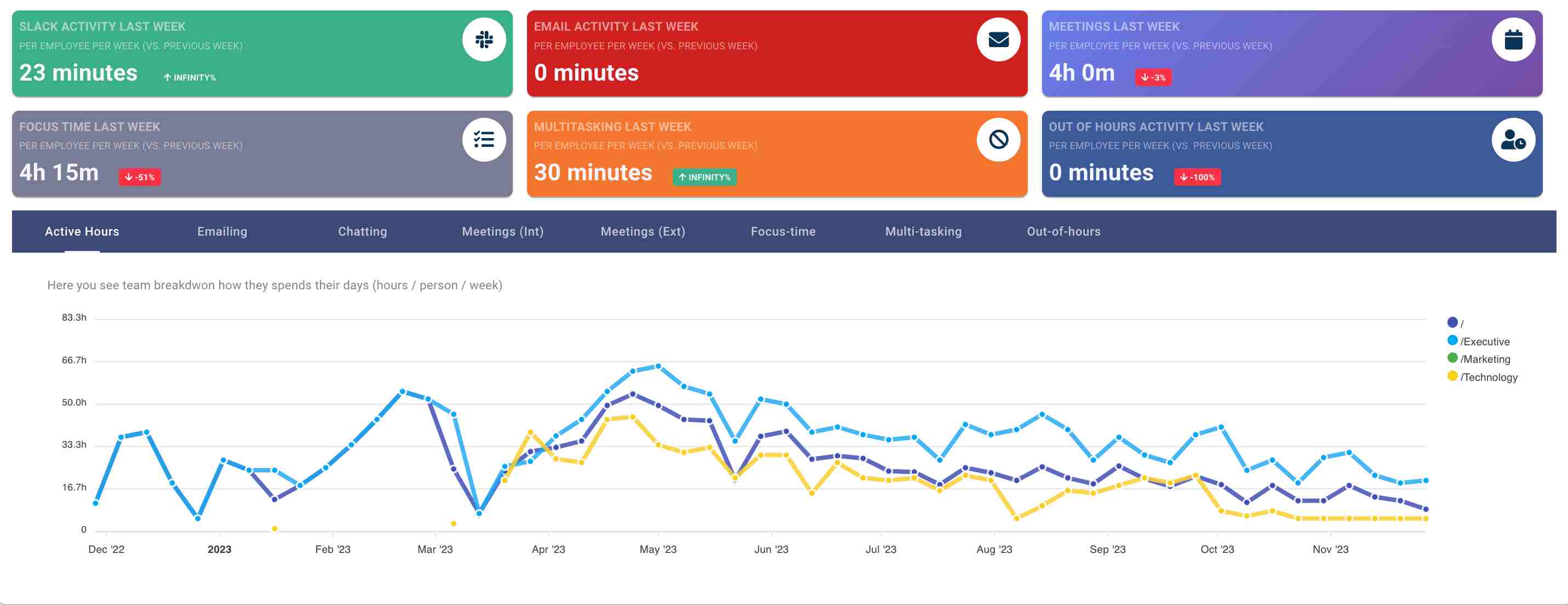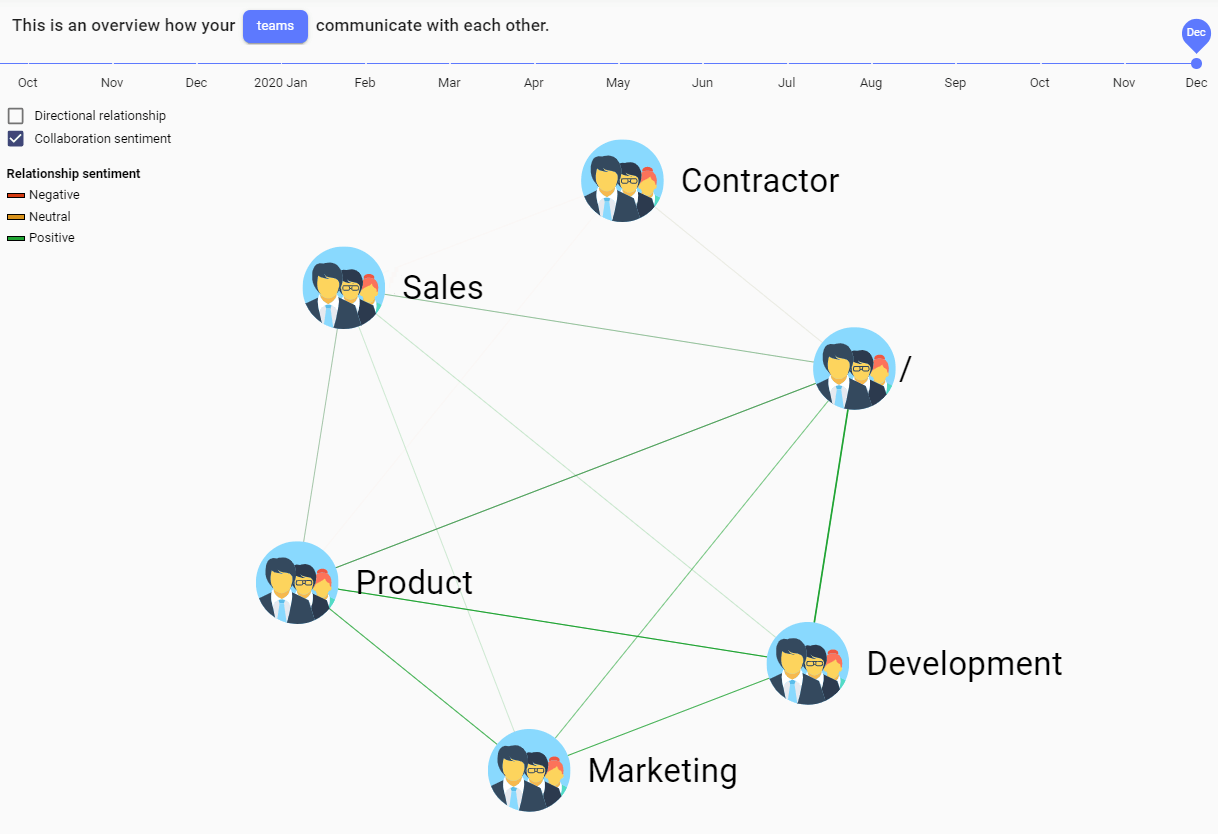Average Time in Meetings & Its Impact
Understanding the average time in meetings is crucial for productivity. Discover the impact on employee productivity and the financial implications.
Increase your workplace productivity with the benefits of no-meeting days. Enhance focus, boost employee productivity, and improve well-being with this innovative approach.
When it comes to workplace productivity, the concept of no-meeting days is becoming increasingly common. This innovative idea involves designating specific days where no internal meetings are scheduled, allowing employees uninterrupted time to focus on their tasks. The rationale behind this approach is to break the cycle of constant meetings that can often dominate work schedules, leading to a phenomenon commonly known as 'meeting fatigue.'
This growing popularity has highlighted many benefits of no-meeting days:
No-meeting days significantly contribute to enhanced focus and deep work, allowing employees uninterrupted time crucial for complex problem-solving and creative tasks. This approach aligns with the concept of 'deep work,' defined as the ability to focus on cognitively demanding tasks, enabling individuals to produce higher-quality work in shorter periods.
A Harvard Business Review study revealed that executives spend a substantial portion of their workweek in meetings - up to 37 meetings a week, underscoring the potential for distraction and fragmentation of focus. The introduction of 'No Meeting Wednesdays' by Asana CEO Dustin Moskovitz in 2013 aimed to protect software developers' and other 'makers'' schedules, allowing for large blocks of uninterrupted time essential for their creative and complex work.

The impact of no-meeting days on productivity and employee satisfaction is significant. According to research, when companies implemented one no-meeting day per week, productivity rose by 35%. This increase was even more pronounced with two no-meeting days per week, where productivity surged to 71%. Interestingly, adding a third day resulted in a modest increase to 73%. This approach also led to improved work satisfaction and a decrease in stress and micromanagement.
No-meeting days help to mitigate the negative effects of excessive meetings, which, as found in a study by the University of North Carolina, are seen as unproductive and inefficient by 71% of senior managers. Furthermore, nearly two-thirds of professionals reported losing time weekly due to unnecessary or canceled meetings, highlighting the inefficiency of a meeting-heavy schedule.
Dedicating specific days to deep, focused work without the interruption of meetings can lead to substantial gains in productivity and employee satisfaction. This approach not only benefits the individual employee but also contributes positively to the overall efficiency and effectiveness of the organization.
Reducing the frequency of meetings can lead to a significant increase in actual work output. This is because continuous work without interruptions allows employees to focus more deeply and complete tasks more efficiently.
A recent study found that 46% of employees believe they attend too many unnecessary meetings, which consume an average of 18 hours per week. This excessive time spent in meetings interrupts other work-related tasks and delays the completion of necessary tasks.
The impact is substantial, with 70% of meetings causing delays in completing essential work. This aligns with findings that indicate 92% of workers feel meetings keep them from their regular work duties, emphasizing the negative impact of excessive meetings on job performance.

Additionally, a HBR study highlighted that when companies reduced meeting time by 40%, worker productivity increased by 70%. This suggests that less meeting time not only frees up employees' schedules but also allows them to find more efficient ways to complete their work. They can make their own agendas and structure their days in ways that best suit their productivity rhythms.
Reducing the number of meetings and shifting towards more focused, uninterrupted work time can significantly enhance employee productivity. This approach not only benefits the individual employee but also contributes positively to the overall efficiency and effectiveness of the organization.
Implementing no-meeting days can have a profoundly positive impact on employee well-being. This approach addresses two of the most common workplace stressors: continuous interruptions and the pressure of balancing multiple tasks.
Reducing Workplace Stress and Burnout:
Enhancing Work-Life Balance:
Improving Overall Employee Satisfaction:
No-meeting days provide a much-needed respite from the constant barrage of meetings, allowing employees to work more effectively, reduce stress, and improve their overall work-life balance. This not only benefits the individual employees but also contributes to a more positive and productive work environment.
Implementing no-meeting days in the workplace significantly encourages the use of alternative, efficient communication tools such as email, instant messaging, and project management software. These tools are particularly beneficial in global and remote work settings where asynchronous communication is crucial.
Promotion of Asynchronous Communication:

Benefits of Asynchronous Communication:
Challenges and Solutions:
No-meeting days encourage a shift towards more efficient and flexible communication methods, particularly beneficial in remote and global work environments. By embracing asynchronous communication and utilizing appropriate tools, teams can maintain productivity, improve collaboration, and enhance work-life balance.
No-meeting days can be instrumental in fostering a work culture that balances collaboration with independent work. This balance is key to creating a dynamic, innovative, and adaptable work environment.
Encouraging Independent Work:
Maintaining Collaboration:

Benefits of Asynchronous Communication:
Creating a More Dynamic Work Environment:
No-meeting days can significantly contribute to a meeting culture that values both collaboration and independent work. By promoting a balance between these two, organizations can create a more dynamic, innovative, and adaptable work environment, benefiting both the employees and the organization as a whole.
Implementing no-meeting days can be a significant change for an organization, and it's important to approach it with a well-thought-out plan. Here are some tips and strategies for companies looking to implement no-meeting days:
While these practices can help in implementing no-meeting days successfully, companies should be aware of potential challenges like missed opportunities, risks of poor accountability, employees feeling disconnected, and risks of miscommunications.
The implementation of no-meeting days offers a multitude of benefits for organizations, including enhanced focus for deep work, increased employee productivity, improved well-being, and the promotion of efficient alternative communication methods. These practices lead to a balanced work culture that supports both collaboration and individual productivity. To effectively implement and monitor this approach, consider utilizing Flowtrace to understand your company's meeting analytics.
Understanding the average time in meetings is crucial for productivity. Discover the impact on employee productivity and the financial implications.
Discover how meeting-free days can enhance productivity and employee well-being in organizations, and how to effectively implement them.
Struggling with too many meetings at work? Learn how to optimize meeting practices, avoid meeting overload, and improve team productivity in this...